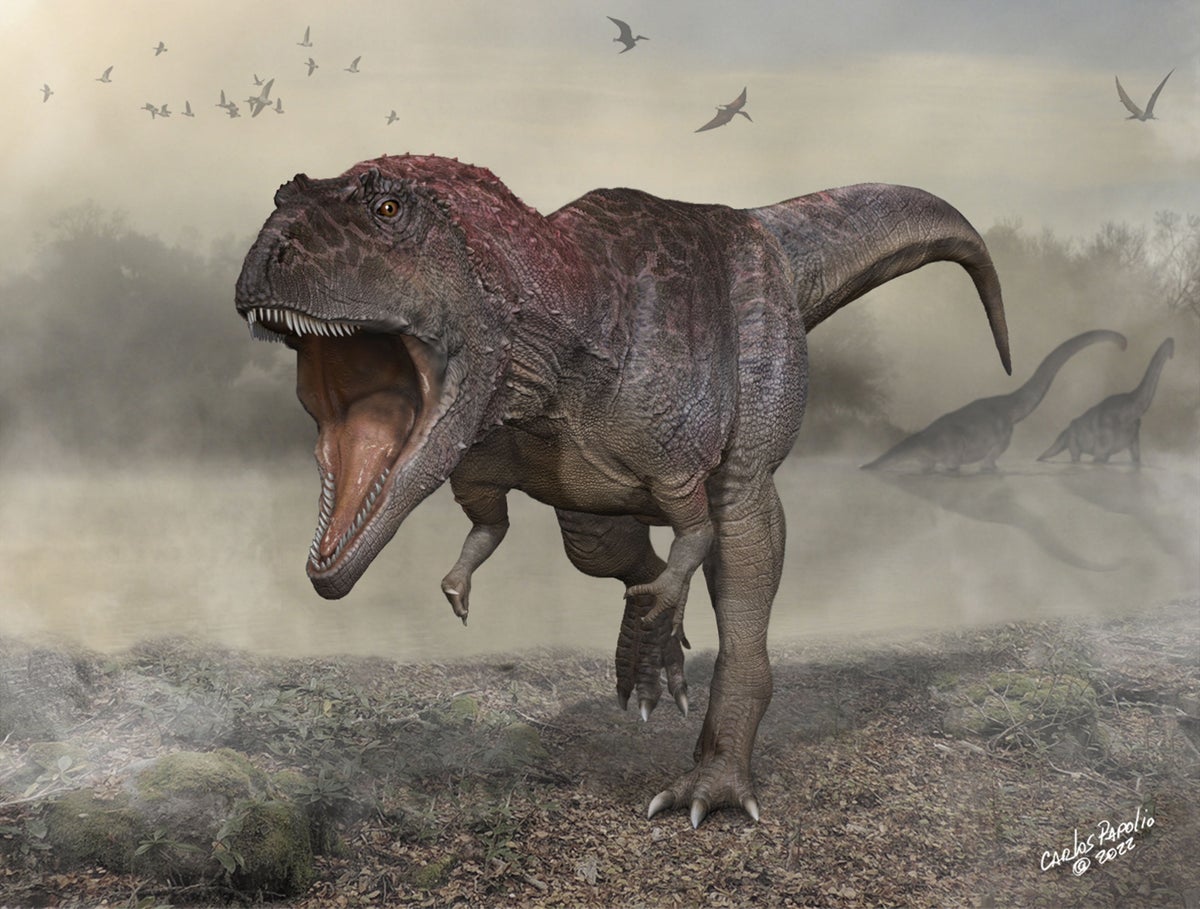
Scientists in Argentina have found a new giant predatory dinosaur which maye help explain the mystery behind why Tyrannosaurus rex has such short arms.
Scientists writing in the Current Biology journal said that extensive skeletal remains of the previously unknown species were dug up in Patagonia.
Named Meraxes gigas, the species were about 36ft (11m) long, with a 1.2m skull and arms that were only 60cm long.
In contrast, T-rex was around 13m (45 foot) long and may have had a skull 1.5m (5ft) long, but arms only about 1m long.
The species found by the scientists has been named Meraxes after a dragon of the Song of Ice and Fire fiction series by George RR Martin and gigas, Greek for giant, referring to the enormous size of the species.
Juan Canale, lead author of the study said to BBC: “I’m convinced that those proportionally tiny arms had some sort of function. The skeleton shows large muscle insertions and fully developed pectoral girdles, so the arm had strong muscles.”
“They may have used the arms for reproductive behaviour such as holding the female during mating or support themselves to stand back up after a break or a fall.”
The study has been co-authored by Mr Canale and Peter Makovicky.
Mr Makovicky said that the dinosaur’s arms were “literally half the length of the skull and the animal would not have been able to reach its mouth”.
The scientists believe that the species’ massive heads were the main predatory tool and performed functions that arms would have had in smaller species.
They added that two other species - tyrannosaurids and abelisaurids - also developed small arms for similar reasons.
A study in April had suggested that the arms of T rex likely shrank in length as an adaptation to prevent amputations when a pack of the mighty dinosaurs descended on carcasses with their massive heads and bone-crushing teeth.







